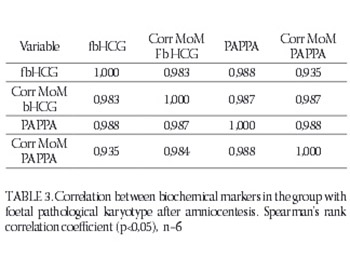Correlation Between Serum Biochemical Markers and Early Amniocentesis in Diagnosis of Congenital Fetal Anomalies
DOI:
https://doi.org/10.17305/bjbms.2010.2726Keywords:
prenatal screening, combined test, nuchal translucency, amniocentesisAbstract
A combined test performed at the 12th week of gestation enables us to classify the pregnancy as high risk (risk higher than 1:300) or low risk (risk lower than 1:300) for congenital foetal anomalies, with great accuracy of 85 - 90%. According to the available data, the frequency of false positive results is estimated at around 5%. The objective of the study was to examine possible correlation between the serum marker values and amniocentesis results in prenatal diagnostics of congenital foetal anomalies. The study included 745 pregnant women monitored by the Genetic Counselling Service of the Clinic of Gynaecology and Obstetrics of the Clinics Centre Kragujevac. The subjects were included in the study under condition that CRL (embryonic crown-rump length) was from 45 to 84 mm and that the gestational age was at 11-13+6 weeks. Free β HCG and PAPP-A were determined from venous blood using commercial DPS-USA tests. Tests were based on the analytic principle of the immuno-chemiluminescence technique and were performed by application of the automatic Immulite 2000 analyzer by DPC-USA. The foetal nuchal translucency thickness (NT) and CRL were measured by Colour Doppler. The chromosome identification was performed after a certain number of cell divisions by stopping the cell division in metaphase of mitosis when the chromosomes were the most distinguishable. The foetal karyotype was prepared using G bands. In the total sample of pregnant women (n=745), there were six cases of pathological foetal karyotype. A statistical paradox in the frequency of congenital foetal anomalies in favour of younger population was noticed. A high coefficient of Spearman’s rank correlation suggests great importance of the combined test in the detection of congenital foetal anomalies (p<0,05). A high consistency was also proved for components of biochemical screening and ultrasonographic markers. The combined test, as a method of prenatal screening in the first trimester of pregnancy, if used at 11 - 13+6 weeks’ gestation and for CRL of 45-84 mm, has a great importance in the detection of congenital foetal anomalies.
Citations
Downloads

Downloads
Published
How to Cite
Accepted 2017-11-28
Published 2010-02-20









